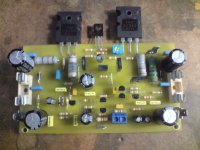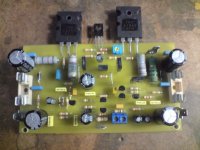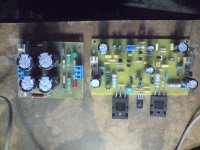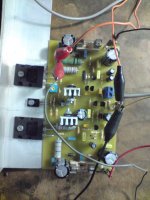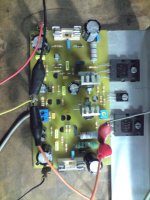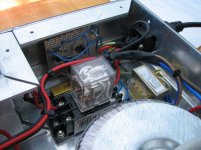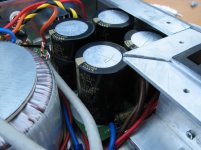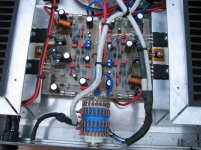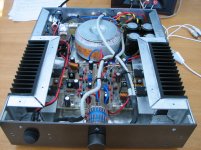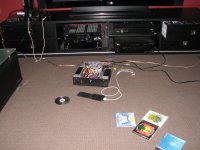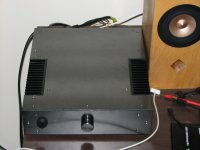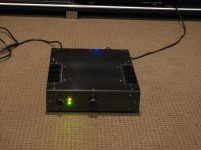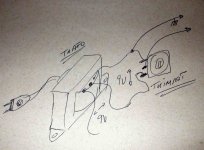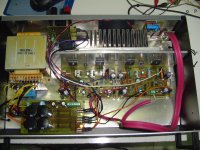No...i could not..i have to give a try once again.
I did it rigth now Johngalt 47..thank you:
http://www.youtube.com/watch?v=PcAWO_bC6-g
regards,
Carlos
I did it rigth now Johngalt 47..thank you:
http://www.youtube.com/watch?v=PcAWO_bC6-g
regards,
Carlos
Last edited:
Carlos and everyone else interested, go to this link:
Mapleshade Records - A La Carte Brass & Percussion
and listen to "That Mellow Saxophone." You won't get the full impact with the mp3 you can download, but it is a taste.
Also, go to : Mapleshade Records - King Bluiett Trio
and listen /download /buy the CD of "Makin Whoopee." It sounds unbelievably good with a good system.
Mapleshade Records - A La Carte Brass & Percussion
and listen to "That Mellow Saxophone." You won't get the full impact with the mp3 you can download, but it is a taste.
Also, go to : Mapleshade Records - King Bluiett Trio
and listen /download /buy the CD of "Makin Whoopee." It sounds unbelievably good with a good system.
Dx Blame ES and ST pictures from diyaudio builders
I thank all them by the kindness to provide me pictures to the hall of fame.
I have used some of them only, there are pictures that have not so good quality to be published...so, there are more folks that have build and have not their pictures published in this small video....also there are repeated pictures from the same builder.
Enjoy:
YouTube - Dx Blame, made by diyaudio folks!
regards,
Carlos
I thank all them by the kindness to provide me pictures to the hall of fame.
I have used some of them only, there are pictures that have not so good quality to be published...so, there are more folks that have build and have not their pictures published in this small video....also there are repeated pictures from the same builder.
Enjoy:
YouTube - Dx Blame, made by diyaudio folks!
regards,
Carlos
DX-ST Complete
Hi Uncle Charlie,
I completed my DX-ST last week already. I was to busy listening to this wonderful amp and forgot to post some pics here. My comments: This is a wonderful amp. Sound is excellent and bass is strong. No switch on or off thumb. I will get my supply transformers tomorrow and assemble complete unit over weekend. Cannot wait.......will keep you posted......



Regards
Macd
Hi Uncle Charlie,
I completed my DX-ST last week already. I was to busy listening to this wonderful amp and forgot to post some pics here. My comments: This is a wonderful amp. Sound is excellent and bass is strong. No switch on or off thumb. I will get my supply transformers tomorrow and assemble complete unit over weekend. Cannot wait.......will keep you posted......
Regards
Macd
Attachments
I receive this news with undisguised joy dear Macd
You've always been interested in our Corporation, the Dx Corporation, the happy audiophiles Union... now going to 600 members.
You use to assemble uncle charlie amplifiers, and this is very much appreciated, also your presence back here again.
I thank you by the confidence, the preference to assemble a Dx amplifier, when we have other good ones in our forum..you're an excellent member of our Corporation, someone developed, that has experience, skilled to assemble, does not brings doubts to the forum, never tries the change projet items...simply build and trust, in a very silent and efficient way.
I love all builders, but of course i have some of them i love the most...the golden frame to your picture (send me) in the hall of fame of the Dx Corporation Headquarters, the highest position in the wall, reserved to golden five stars members.
I would like to have your picture (publishable and containing the automatic authorization of use), in an identification card style or driver's licence style...and this if you want, of course.
carlos.eugenio1951@yahoo.com[/email]
regards,
Carlos
You've always been interested in our Corporation, the Dx Corporation, the happy audiophiles Union... now going to 600 members.
You use to assemble uncle charlie amplifiers, and this is very much appreciated, also your presence back here again.
I thank you by the confidence, the preference to assemble a Dx amplifier, when we have other good ones in our forum..you're an excellent member of our Corporation, someone developed, that has experience, skilled to assemble, does not brings doubts to the forum, never tries the change projet items...simply build and trust, in a very silent and efficient way.
I love all builders, but of course i have some of them i love the most...the golden frame to your picture (send me) in the hall of fame of the Dx Corporation Headquarters, the highest position in the wall, reserved to golden five stars members.
I would like to have your picture (publishable and containing the automatic authorization of use), in an identification card style or driver's licence style...and this if you want, of course.
carlos.eugenio1951@yahoo.com[/email]
regards,
Carlos
Last edited:
Final question about sensitivity and some pics
I noticed that while testing the amp that I was only getting a maximum peak voltage of 10v AC as measured on a multimeter when playing music at maximum volume. This was the same as when using a cd player with rca outs to when using my ipod with rca outs. The rca plugs are giving out around 0.5v output into the amp. Can some resistor changes be made to make the amp more sensitive? Is 10v AC max on a 50w amp normal? The rails on this amp is 38v?
Regards
Niss_man
I noticed that while testing the amp that I was only getting a maximum peak voltage of 10v AC as measured on a multimeter when playing music at maximum volume. This was the same as when using a cd player with rca outs to when using my ipod with rca outs. The rca plugs are giving out around 0.5v output into the amp. Can some resistor changes be made to make the amp more sensitive? Is 10v AC max on a 50w amp normal? The rails on this amp is 38v?
Regards
Niss_man
Attachments
Measuring with music, dear niss_man, usually shows this voltage or less
give a try with sinusoidal audio entering.
If you have not a generator, them use 60 hertz, because digital multimeter can measure this frequency, in rms and having good precision.... this mains tone can be picked using a transformer, a small one, these ones for 4.5 volts, 6 volts or 12 volts...you take the AC output and connected a 10 to 50K trimpot, them you will adjust your signal to 750 milivolts rms... multimeter can do that....and then pick this sinal...one trimpot extreme plus the cursor (trimpot center lead)..the same you have adjusted 750 milivolts and connect to your amplifier input..you should read 20 volts if your supply, under this condition, and during this moment of load, maintain the voltage to 35 volts or more.
Of course, as you know, if your supply voltage drop below 35 volts you will not have this result anymore....the amplifier put out 20 volts RMS with 8 or 4 ohms load...minimum!.... should put out even more.
Watching the scope you gonna see the unclipped waveform.
Thank you by the nice pictures... and send me one of yourself if you want to the hall of fame.
You have made a very beautifull construction..congratulations!
regards,
Carlos
give a try with sinusoidal audio entering.
If you have not a generator, them use 60 hertz, because digital multimeter can measure this frequency, in rms and having good precision.... this mains tone can be picked using a transformer, a small one, these ones for 4.5 volts, 6 volts or 12 volts...you take the AC output and connected a 10 to 50K trimpot, them you will adjust your signal to 750 milivolts rms... multimeter can do that....and then pick this sinal...one trimpot extreme plus the cursor (trimpot center lead)..the same you have adjusted 750 milivolts and connect to your amplifier input..you should read 20 volts if your supply, under this condition, and during this moment of load, maintain the voltage to 35 volts or more.
Of course, as you know, if your supply voltage drop below 35 volts you will not have this result anymore....the amplifier put out 20 volts RMS with 8 or 4 ohms load...minimum!.... should put out even more.
Watching the scope you gonna see the unclipped waveform.
Thank you by the nice pictures... and send me one of yourself if you want to the hall of fame.
You have made a very beautifull construction..congratulations!
regards,
Carlos
Attachments
Last edited:
For an input voltage of 586mV rms I measured 15.39V rms no load connected. Input frequency was 20Hz. This is a gain of 26.26. Peak output voltage for the corresponding input is 21.76V, while Peak-to-Peak is 43.52V. It was not my goal to see the highest input required to reach the highest output voltage. Transformer used is 24-0-24 AC.
Multimeters, are not precise at 20 hertz..they may measure lower voltage
they can measure but usually loose precision.... these small digital multimeters, usually measure AC mains voltage (200 and 600 volts scale usually)... and measure with 60 hertz...observe this is the mains frequency...the frequency where they are precise.
Well..if you have measured with multimeter.
Also... the power should be measured over a load (resistance) or speaker..this way you gonna have supply voltage losses and the power measured will be realistic....with open output your are not measuring the real thing .
Your peak to peak informed was result of calculation or you have measured in a scope calibrated display?
regards,
Carlos
they can measure but usually loose precision.... these small digital multimeters, usually measure AC mains voltage (200 and 600 volts scale usually)... and measure with 60 hertz...observe this is the mains frequency...the frequency where they are precise.
Well..if you have measured with multimeter.
Also... the power should be measured over a load (resistance) or speaker..this way you gonna have supply voltage losses and the power measured will be realistic....with open output your are not measuring the real thing .
Your peak to peak informed was result of calculation or you have measured in a scope calibrated display?
regards,
Carlos
Last edited:
The results were from multimeter only. Peak and Peak-to-Peak results are only calculations based on multimeter measurements. Concerning loading when doing measurements, if I decide to perform more measurements, I will get my self a couple of 20watt 8 Ohm resistors.
Usually 20Hz won't be perfect frequency at which we can use multimeter to perform measurements. At 20Hz, on the back of my brain, this should give me some idea about the relation between input and output, it is not accurate as if I used 50/60Hz.
Usually 20Hz won't be perfect frequency at which we can use multimeter to perform measurements. At 20Hz, on the back of my brain, this should give me some idea about the relation between input and output, it is not accurate as if I used 50/60Hz.
I will be out soon..to a surgery...please, Omar, you are Dx Corporation
So, take care of this to me... representing uncle charlie...you're a teacher..so...you know how to do these things.
If have doubts, them call me by mail and we gonna remove doubts together.
regards,
Carlos
So, take care of this to me... representing uncle charlie...you're a teacher..so...you know how to do these things.
If have doubts, them call me by mail and we gonna remove doubts together.
regards,
Carlos
This Dx Blame ST was made in Greece...i could not detect the one have made
ahahahahahah! ...i cannot understand these words they write:
...i cannot understand these words they write:
ΛΕΥΤΕΡΗΣ ....i think his name is Dias.
translator said "Lefterias Manias"... he is in Island of Rodhos (Rodhes, Rodes)
regards,
Carlos
ahahahahahah!
ΛΕΥΤΕΡΗΣ ....i think his name is Dias.
translator said "Lefterias Manias"... he is in Island of Rodhos (Rodhes, Rodes)
regards,
Carlos
Attachments
Last edited:
- Status
- This old topic is closed. If you want to reopen this topic, contact a moderator using the "Report Post" button.
- Home
- Amplifiers
- Solid State
- Dx Blame ST - Builder's thread - post pictures, reviews and comments here please.
